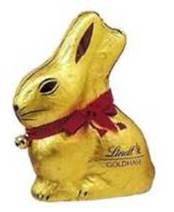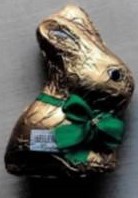Protecting Unconventional Trademarks: Strategies for Businesses in Vietnam
Color is not just about external beauty, but also the soul of a brand. Many businesses have researched, selected, and used colors for product packaging and brand identity to convey messages, core values, evoke emotions, and connect with customers in a subtle and effective way. Businesses around the world, including Vietnam, are increasingly paying attention to the use of color as a strategic element in brand building.
In a recent ruling, the German Supreme Court has made a historic decision, recognizing that the gold color of Lindt’s Gold Bunny can be protected under unregistered trademark law in Germany, opening up a wide range of protection for non-traditional trademarks created from “color”. This is a significant victory for businesses that want to protect non-traditional trademarks, including colors, shapes, and packaging. The ruling paves the way for Lindt to enforce its rights against copycat products of its Gold Bunny.
Legal Battle: The Gold Chocolate Packaging Keeps Getting Rejected
Lindt & Sprüngli (“Lindt”) is a renowned producer of high-quality chocolates, including its iconic Lindt Gold Bunny. In Germany, Lindt has been using gold foil to wrap this product since 1952 and the current shade of gold since 1994. Over 500 million Gold Bunnies have been sold in Germany over the past 30 years, making the Lindt Gold Bunny a beloved and best-selling Easter symbol in the country, with a market share of over 40% in 2017. A consumer survey conducted by Lindt revealed that 70% of respondents associated the color gold with Lindt when used in connection with chocolate bunnies.
Several chocolate companies have used the image of a bunny in gold foil-wrapped chocolate to market their products. Lindt has fought tirelessly to protect its iconic gold foil-wrapped chocolate bunny. However, their efforts have been met with numerous obstacles as intellectual property (IP) offices in different countries have consistently refused to recognize “gold” as a Lindt trademark.
In 2011, Lindt lost a trademark infringement lawsuit against rival Riegelein when the Court of Justice of the European Union ruled that the trademark for the shape and packaging of the Gold Bunny “lacked distinctiveness,” raising concerns about the future of the iconic chocolate bunny.
Turning point
Undeterred, Lindt continued its relentless pursuit of justice. In 2018, Lindt sued another chocolate maker for selling a product featuring a seated gold foil-wrapped chocolate bunny during the 2018 Easter season.
| Lindt Gold Bunny | Infringing Gold Bunny |
 |  |
The initial court ruling was in Lindt’s favor. However, in 2020, the Munich Court of Appeal overturned the ruling and found that Lindt did not hold such unregistered trademark rights in Germany for the color “gold” (colour gold) in relation to the Chocolate Bunny (Case 29 U 6389/19). The court ruled that Lindt had not established a secondary meaning of the color itself for the Chocolate Bunny. Rather, the secondary meaning only stemmed from the distinctive reputation of the specific product. As a result, Lindt appealed to the Supreme Court.
Supreme Court Ruling
The Supreme Court has recognized and acknowledged Lindt’s unregistered trademark rights in the color “gold” for its chocolate bunny products.
This ruling is based on two factors: (i) A survey showing that 70% of consumers associate the color gold with the Lindt Group when thinking of chocolate bunnies and (ii) The likelihood of consumer confusion.
In addition, the Supreme Court confirmed that secondary meaning does not require an abstract color mark to be used as a ‘distinctive color’ for ‘all’ or ‘many’ different products offered by the company.
The case has been remanded to the Munich Court of Appeal, which will have to decide whether Lindt’s trademark gold is actually infringed by the third-party Gold Bunny.
Appellate Court Rehearing Judgment
In October 2022, in its ruling, the Munich Court of Appeal confirmed the infringement based on the likelihood of confusion. Specifically, the Munich Court of Appeal found that the defendant’s use of gold was considered “trademark-like use”, meaning that the defendant used gold for the same function as a trademark.
Secrets Behind the Victory
Lindt’s success is not just down to luck, but also the result of a smart and persistent legal strategy. Lindt has gathered compelling evidence to demonstrate the strong link between the color gold and its brand, including:
- Consumer survey: 70% of survey participants associate the color gold with Lindt when thinking about rabbit-shaped chocolate.
- History of use: Lindt has used gold for its Gold Bunny since 1952, establishing strong brand recognition.
- Uniqueness: Lindt’s gold color is used consistently and distinctively from other products on the market.
Final thoughts
The seemingly deadlocked “Lindt Gold Bunny” trademark dispute has finally come to an end with a victory for the rightful trademark owner. Clearly, this was not just a trademark case, but a battle to protect the identity and heritage of a long-established brand. With determination and proper legal strategy, even the biggest legal challenges can be overcome.
For foreign companies operating in Vietnam, the Lindt case provides valuable insights into the evolving landscape of non-traditional trademark protection. Single-color trademarks (only one color) are inherently not distinctive, and Vietnamese intellectual property law does not protect single color trademarks, but that does not mean they are completely unprotected by law. Single-color trademarks can be protected like any other trademark, provided they acquire distinctiveness through use in commercial practice. This case shows that with creative legal strategy and compelling evidence, even non-traditional elements like color can be protected like any other trademark.
The Lindt trademark case offers valuable lessons for Vietnamese businesses that have used, are using, or intend to use colors and other non-traditional elements for brand building. Businesses need to build strong brands, gather comprehensive evidence, and collaborate with intellectual property lawyers with deep expertise in IP to successfully protect non-traditional trademarks.
QUAN, Nguyen Vu| Partner, IP Attorney
HONG, Hoang Thi Tuyet | Senior Trademark Attorney
Ly, Dinh Trang| Associate
Related Articles:
- Handling intellectual property rights infringement in Vietnam: Which measures are effective?
- Why Can’t A Trademark Owner in Vietnam Address Infringement Issues?
- Combating IP Infringement Effectively: Why Multi-Form Protection is Essential in Vietnam
- Facing a Trademark Refusal in Vietnam? Learn How to Appeal and Win
- IPR Enforcement in Vietnam
- Unveiling a Counterfeit Food Supplement Ring: Criminal Prosecution for a Korean Trademark Counterfeiting Case
- Beyond First-to-File: How Copyright Won a Trademark Battle in Vietnam?
- Facing a Trademark Refusal in Vietnam? Learn How to Appeal and Win
- Chinese Character Trademarks: Still Protected or Outdated?
- What To Do if Your Trademark has been Stolen in Vietnam?
- Registering a Trademark in Bad Faith in Vietnam: How to Prove the Applicant’s Intentions and Motives
- Taking Advantage of the Reputation of the Legitimate Trademark Owner: How to Prove?

